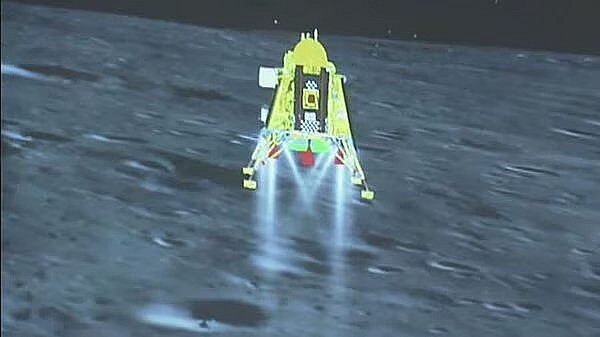Chandrayaan-4: ISRO to bring back soil samples from the Moon; check details of next lunar mission
The Chandrayaan-4 mission, as outlined by Nilesh Desai, Director of the Space Applications Centre (SAC/ISRO), during the 62nd foundation day celebration of the Indian Institute of Tropical Meteorology in Pune, will involve a sample return from the lunar surface.
“In this mission, the landing will be similar like Chandrayan-3 but the central module will come back after docking with the orbiting module which will later separate near to Earth atmosphere and re-entry module will come back with the sample of the soil and rock of the Moon. It's a very ambitious mission hopefully in next five to seven years we will meet this challenge of bringing sample from the surface of the moon," ANI quoted Desai as saying.
This mission is expected to be more complex than its predecessor. Where Chandrayaan-3 had a rover of 30 kg, Chandrayaan-4 plans to land a massive 350 kg rover. The challenge increases as the mission aims to perform a precise landing on the Moon's rim, an area yet to be explored. The rover will have an exploration area of 1 km x 1 km, significantly larger than Chandrayaan-3's 500 meters x 500 meters.
Chandrayaan-4's success depends on its ability to return lunar soil samples to Earth. This process involves the lander module docking with the orbiting module in space, followed by the return of the central module with the samples. This operation will include two launch vehicles, indicating the mission's scale and complexity.
ISRO is also collaborating with the Japanese space agency JAXA on another lunar mission, LuPEX, which will explore the Moon's darker side. This mission will witness a rover weighing up to 350 kg exploring areas up to 90 degrees on the lunar surface.(with ANI inputs)
Recommended
 World
World
India sending Holy Relics of Lord Buddha to Vietnam a special gesture, has generated tremendous spiritual faith: Kiren Rijiju
 World
World
Why the India-US Sonobuoy Co-Production Agreement Matters
 World
World
Vietnam’s 50-year Reunification Celebration Garners Argentine Press’s Attention
 World
World
"Will continue offering our full support to Indian govt": US FBI Director after Pahalgam attack
Popular article
 World
World
"Great Leader": JD Vance Lauds PM Modi During His India Visit
 World
World
Trump’s Tariff Pause: A Strategic Move from “The Art of the Deal”?
 World
World
"Indian Navy's participation in AIKEYME exercise matter of great happiness": Admiral Dinesh Kumar Tripathi
 World
World




